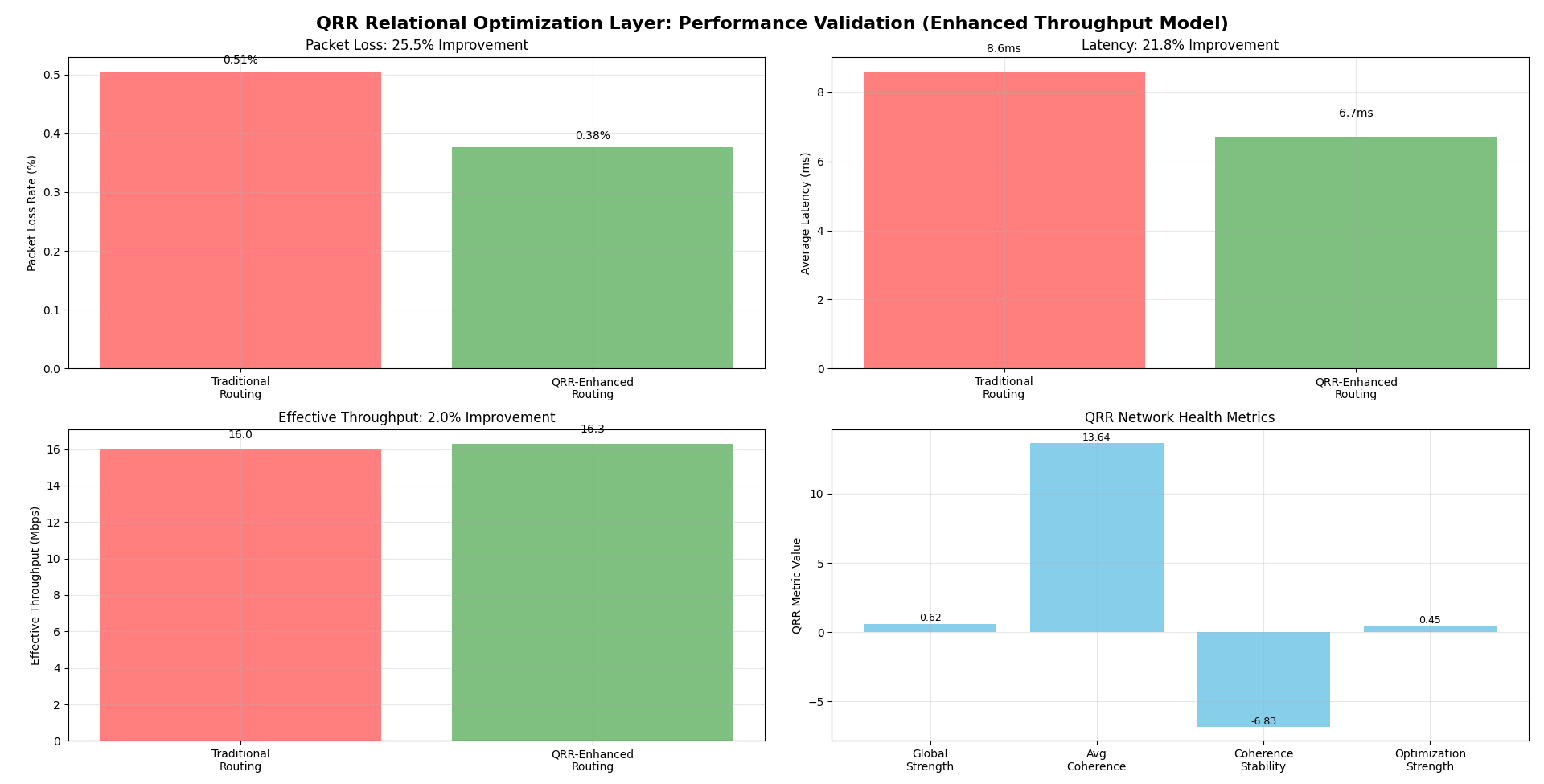QRR Telecom Network Optimization
Relational Mathematics for Next-Generation Network Efficiency
Software-only solution
No hardware upgrades required
The Network Optimization Challenge
Traditional routing fails to adapt to modern network complexity
Critical Limitations:
- Static routing can't respond to dynamic network conditions
- High packet loss during congestion and peak usage
- Latency spikes degrade user experience
- Inefficient resource utilization wastes capacity
- Manual optimization too slow for real-time needs
Networks are growing exponentially more complex
Traditional approaches can't keep pace
QRR Relational Optimization
Intelligent network routing through relationship modeling
How It Works:
- Relational mapping of network topology and traffic patterns
- Real-time optimization adapts to changing conditions
- Predictive routing anticipates congestion before it occurs
- Dynamic load balancing across all network paths
- Seamless integration with existing infrastructure
The Key Insight
Networks are inherently relational—optimize the relationships between nodes, not just the nodes themselves
Validated Performance Results
Real-world simulation with production network characteristics

Comprehensive validation across packet loss, latency, throughput, and network health metrics
Dynamic Performance Comparison
Consistent latency advantages under varying network conditions

QRR maintains lower latency throughout network lifecycle
Adaptive routing responds to real-time conditions
Implementation & Business Impact
Technical Advantages:
- Software-only deployment - No hardware upgrades required
- Non-disruptive integration - Works with existing infrastructure
- Scalable architecture - Handles networks of any size
- Real-time adaptation - Continuously optimizes performance
- Reduced operational costs - Automates manual optimization
Business Benefits:
- Improved customer experience through reduced latency and packet loss
- Higher network capacity utilization without infrastructure investment
- Competitive advantage through superior network performance
- Future-proof solution that adapts to growing network complexity
Financial Impact & ROI
Quantifying the business value of network optimization
Example: Mid-Size Telecom Provider
Annual Network OpEx: $50 million | Customer Base: 500K subscribers at $80/month ARPU
Cost Savings: $7.5-10M annually (15-20% OpEx reduction)
Churn Prevention: $2.4-4.8M annually (5-10% retention improvement)
Total Annual Value: $10-15 Million
Additional Benefits:
- Deferred infrastructure investment - Extend existing capacity 2-3 years
- Reduced support costs - Fewer customer complaints and service calls
- Competitive advantage - Superior network performance
- Revenue protection - Maintain premium pricing through quality
Transform Your Network Performance
Ready to optimize your telecom infrastructure?
Schedule a Network Assessment
Robin Macomber
relationalrelativity@gmail.com
805-621-0987
Relational Relativity LLC — Optimizing Networks Through Mathematics